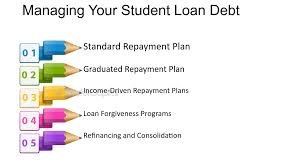
How to Find Hidden Gems: Investing in Undervalued Real Estate Markets
Investing in undervalued real estate markets can yield significant returns if approached correctly. Here’s a comprehensive guide on how to identify these hidden gems:
1. Research Emerging Neighborhoods
Look for Growth Indicators: Focus on areas with rising job opportunities, increasing population, and new developments. Research local economic growth, infrastructure projects, and university expansions as signs of potential.
Visit the Area: Spend time in prospective neighborhoods. Look for signs of community engagement, investment in public facilities, and improvements in amenities.
2. Analyze Market Trends
Utilize Real Estate Platforms: Tools like Zillow, Redfin, and Realtor.com can provide insights into property values, historical trends, and market forecasts.
Monitor Price Trends: Look for neighborhoods where property values have remained stable or have dipped, but economic indicators suggest they may rebound soon.
3. Connect with Local Experts
Engage Real Estate Agents: Local agents can offer valuable insights about up-and-coming areas and provide access to off-market listings.
Network with Investors: Join local real estate investment groups or attend seminars to learn from seasoned investors about where they see potential.

4. Evaluate Property Potential
Consider Fixer-Uppers: Properties that need minor renovations can be purchased below market value and can yield excellent returns after improvements.
Conduct a Comparative Market Analysis (CMA): Evaluate recent sales in the area to determine fair market value and identify undervalued properties.
5. Explore Economic Factors
Check Local Economic Health: Review local employment rates, new businesses opening, and economic diversity (e.g., presence of various industries).
Government Incentives: Look for areas with tax incentives, grants, or plans for infrastructure improvements that can boost property values.
6. Leverage Technology and Data
Use Big Data and Analytics Tools: Platforms like Mashvisor and PropStream can offer predictive analytics about neighborhoods and investment potential.
Social Media Insights: Pay attention to community engagement on platforms like Facebook, Nextdoor, or Instagram, which can reveal local trends and sentiments.
7. Look Beyond Major Cities
Consider Suburbs and Smaller Towns: Major cities are more saturated, while surrounding suburbs and small towns may offer better value and growth potential.
Evaluate Rental Demand: Analyze areas with high rental demand, such as college towns or regions with growing populations.
8. Beware of Red Flags
High Vacancy Rates: Avoid areas with excessively high vacancy rates, as these may indicate declining neighborhoods.
Deteriorating Infrastructure: Be cautious of neighborhoods with significant infrastructure decay, unless there are plans for revamping.
9. Visit Multiple Times
Conduct Multiple Assessments: Visit potential investment areas during different times of day and week to gauge traffic, community dynamics, and local activity.
10. Trust Your Instincts but Back It Up with Data
Combine Data with Personal Insights: While data is essential, your intuition about a neighborhood can be just as critical. Balance your instincts with thorough research.
Conclusion
Investing in undervalued real estate markets requires diligence, research, and a keen eye for future potential. By utilizing these strategies, you can uncover hidden gems that may offer lucrative investments for years to come. Always conduct thorough due diligence before making a purchase to mitigate risks and maximize your return on investment. Happy hunting!






